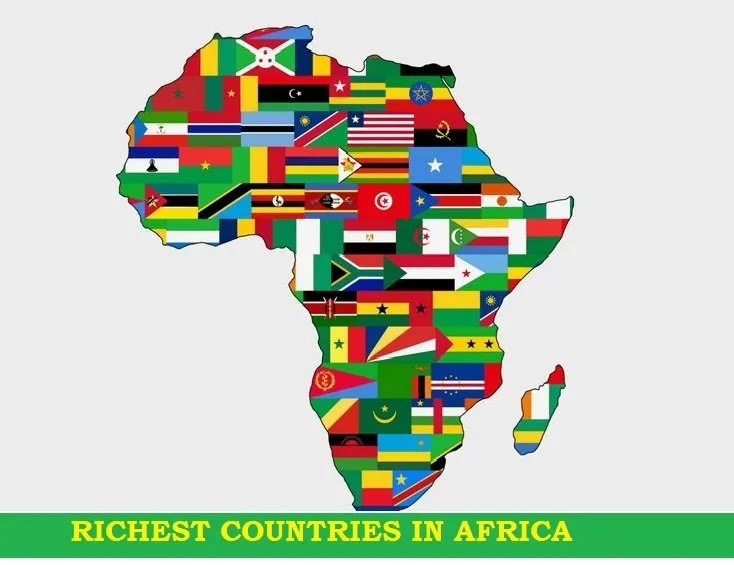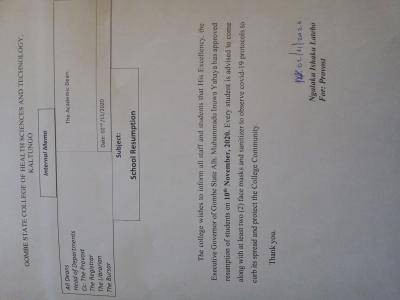
Africa is a beautiful continent with an abundance of natural resources, raw materials, precious metals, and lush soil. Some African countries have done an excellent job of developing their economies and becoming popular tourist destinations in recent years.
On the other hand, despite abundant natural resources, many African countries are among the poorest in the world, with a sizable proportion of the population living in poverty.
Africa’s economic growth varies greatly by country and region, with differences ranging from culture to trade to historical development, international ties, and major resources and this contributes to the country’s level of wealth and development. Being the richest country in African does not equate to being the most developed. You can read up the 10 most developed countries in Africa, it is a very insightful article you can use in comparing and contrasting between being developed or rich as a country.
GDP is a key tool used to determine the wealthiest countries in Africa.
The Gross Domestic Product (GDP) is the total value of all goods and services produced in a country over a specific time period, typically a year. It indicates the level of productivity in a country. Data from the International Monetary Fund’s 2021 GDP report was used to determine the richest African countries.
Other metrics derived from the GDP and used to measure the wealth of a country are;
GDP per capita: This is the ratio of the GDP to the total population of the region.
GDP (PPP) per capita: is the purchasing power parity value of all final goods and services produced within a country in a given year divided by the average (or mid-year) population for the same year.
Using a PPP basis is arguably more useful when comparing generalized differences in living standards between nations because PPP takes into account the relative cost of living and the inflation rates of the countries, rather than using only exchange rates which may distort the real differences in income.
Having noted this, the rest of the article looks at the 10 richest African countries based on the latest data from the International Monetary Fund’s 2021 GDP report.
Top 10 Richest Countries in Africa 2022 Report
1. NIGERIA
Nigeria, with its vibrant cultural legacy, diverse ethnicities, natural beauty, and vast population, remains Africa’s wealthiest country and the continent’s top producer in terms of GDP output, with a GDP of $514.05 billion. Finance, transportation, infrastructure, tourism, and a plentiful supply of crude oil all contribute significantly to the country’s large GDP.
Despite the fact that oil revenues account for two-thirds of state revenue, oil only accounts for about 9% of GDP. Nigeria accounts for only about 2.7 per cent of the world’s oil supply. Although the petroleum sector is important because government revenues are still heavily reliant on it, it remains a minor component of the country’s overall economy.
Nigeria, in addition to petroleum, has a diverse range of raw commodities and natural resources that contribute to the region’s prosperity. Among them are coal, limestone, zinc, lead, tin, natural gas, niobium, and iron ore.
There is also enough fertile land for agriculture, which produces cocoa and rubber and accounts for approximately 20% of GDP. Nigeria’s massive population has contributed to the country becoming Africa’s largest consumer store, and its digitally savvy citizens have contributed to the country’s rapidly growing IT sector.
According to the World Bank, Nigeria’s GDP increased at a 7 per cent annual rate between 2000 and 2014, making it one of the fastest-growing economies in Africa. Political unrest, socio-economic issues, and oil and production shocks have reduced this to slightly more than 2% in recent years. The government has prioritized the protection of its natural resources, attempting to wean itself off its reliance on oil refineries and processing plants.
2. EGYPT:
Egypt is currently the world’s second-richest country, with a recent GDP of $394.28 billion. For many years, this ancient region in Northern Africa held the title of Africa’s richest country, with a GDP of $394.28 billion. The economy, on the other hand, was severely harmed, and foreign exchange reserves plummeted as a result of the Arab uprising in 2011.
As of 2021, the country’s economy was the second-largest in Africa after Nigeria in terms of nominal GDP, the sixth-largest in the Middle East, and the 36th largest in the world.
The rapid pace of structural reforms (including fiscal and monetary policies, taxation, privatization, and new business legislation) has aided Egypt’s transition to a more market-oriented economy and encouraged increased foreign investment. The reforms and policies have improved the annual macroeconomic growth results.
Economic activity has increased and stabilized over the last decade, resulting in strong economic growth. The government and the IMF recently completed an economic reform package aimed at strengthening and improving the economy. Real GDP growth was 5.6 per cent in 2019, up from 5.3 per cent in 2018. The country’s unemployment rate has dropped, and the economy has grown stronger.
Tourism, wholesale and retail trade, construction, and real estate are all important components of the Egyptian economy. The state’s economy has shifted away from raw material exports in recent years, with service-based employment accounting for more than half of the GDP.
3. SOUTH AFRICA
With a GDP of $329.53 billion, South Africa’s economy is the third-largest in Africa and the most industrialized, technologically advanced, and diverse in Africa. South Africa has an upper-middle-income economy, one of only eight in Africa, and is one of the world’s fastest developing.
Following the end of more than a decade of international sanctions in 1996, South Africa’s GDP (nominal) nearly tripled to its current peak of US$416 billion in 2011. It has since fallen to around $317 billion in 2021. Within two decades of the end of apartheid, foreign exchange reserves increased from US$3 billion to nearly US$50 billion, resulting in a diversified economy with a growing and sizable middle class.
South Africa is one of the few countries on this list that is not dependent on a single source of income. Mining, manufacturing, finance, and tourism are all important industries in the country. Gold, diamonds, platinum, coal, and iron ore are among the plentiful natural resources and raw material exports. It exports a lot of these metals, especially gold and platinum.
4. ALGERIA
Algeria, the continent’s largest country in the north, ranks fourth on this list of the wealthiest countries in Africa, with a GDP of $151.46 billion. With a large economy and infrastructure, as well as a GDP of more than $150 billion, the country has made great strides in reducing poverty by 20% in the last 20 years.
The economy of this emerging Saharan country is heavily reliant on crude oil reserves, which are plentiful. As a result, hydrocarbons (oil and natural gas) account for roughly 70% of the country’s revenue. More crude oil reserves have recently been discovered, which has aided this rapidly growing industrial country.
Other industries that contribute to Algeria’s economy include agriculture, industrial activities, commercial services, and construction. Furthermore, the country is a major supplier of ammonia to Africa.
However, the current drop in oil prices has resulted in a reduction in the country’s currency reserves. Algeria’s economic growth has also slowed as a result of political unrest and oil-related scandals.
5. MOROCCO
With a GDP of $124 Billion, Morocco’s economy is diverse and stable, with growth in a variety of areas over the last decade. It is Africa’s second-richest non-oil producing nation.
Mining and industry are the mainstays of the country’s economy. Morocco’s GDP is composed of 30% industry, 15% agriculture, and 55% services. This is aided by the growing tourism industry, with residents welcoming visitors and the government focusing heavily on attracting tourists to the country’s well-known attractions.
Morocco is the world’s third-largest producer of phosphorus, relying primarily on agriculture. The country has reaped significant benefits from its diverse exports, which include electrical equipment, automobiles, and car parts, among others. Furthermore, the telecommunication and textile sectors make major contributions to the economy.
6. KENYA
Kenya, an East African country famous for its wide landscapes and animals, has a GDP of more than $106 billion, making it one of Africa’s richest countries. Because of stable living conditions, a thriving coffee and tea industry, and a rapidly expanding agricultural sector, this country is the wealthiest in Southeast and Central Africa.
Its coastline has long served as a key port for Asian and Arabian traders, transforming it into a regional trading powerhouse. Kenya’s economy is not based on oil, as many of the other countries on our list are, but it is growing in a variety of ways. Kenya’s GDP increased by 5.7% in 2019, making it one of the fastest-growing economies in Sub-Saharan Africa.
7. ETHIOPIA
At $93.97 Billion in GDP, agriculture, construction, manufacturing, tourism, food processing, resources, and energy account for the majority of Ethiopia’s economic gain. Of all these sectors, agriculture is the region’s most valuable resource, accounting for more than 40% of GDP.
Ethiopia’s government is in the process of privatizing many state-owned enterprises in order to transition to a market economy. Government-owned firms dominate the banking, telecommunications, and transportation sectors of the economy.
Ethiopia has one of the world’s fastest-growing economies and is Africa’s second-most populous country. Many properties owned by the government during the previous regime have now been privatized or are in the process of being privatized. Certain sectors, such as telecommunications, financial and insurance services, air and land transportation services, and retail, are considered strategic and are expected to remain under state control for the foreseeable future.
Despite this, Ethiopia’s economy has grown at an average annual rate of 9.9 per cent since 2008. This consistent annual growth, which only a few African countries have achieved, has begun to attract global investment. In 2018, the administration embarked on a bold economic reform to further open up the economy and drive transformation. By 2015, the country’s poverty rate had dropped to 31%, and it aimed to become a middle-income economy by 2025.
8. GHANA
Ghana has a diverse and resource-rich economy which accounts for its GDP of $74.26 billion. With this GDP, it is one of the richest countries on the African continent and has attracted international investment and grown at a rate of slightly more than 6% over the last two years.
Ghana’s economy has a diverse and rich resource base, which includes the manufacture and exportation of digital technology goods, the construction and exportation of automobiles and ships, and the export of a broad range of valuable resources, such as hydrocarbons and mineral processing. As a result of these factors, Ghana now has one of the highest GDP per capita rates in West Africa.
Part of this success is attributed to its favorable business environment. Services generate nearly half of Ghana’s GDP and employ nearly one-third of the workforce. The agriculture sector contributes the second largest to Ghana’s GDP followed by the industry sector. Key crops that contribute to the agriculture sector’s high GDP include cocoa beans and lumber.
9. IVORY COAST
Côte d’Ivoire has the largest economy in the West African Economic and Monetary Union, with a GDP of $70.99 billion. After years of political upheaval and economic loss, the country has been steadily growing.
In the aftermath of political instability in recent decades, the Ivory Coast’s economy is stable and growing. The Ivory Coast’s economy is largely market-based and heavily reliant on agriculture.
Key contributors to the sector are cocoa, coffee and palm oil. Cote d’Ivoire is the world’s largest cocoa producer (30% of global output), as well as a significant coffee and palm oil exporter.
Offshore oil and gas deposits are also large, and exploration has already increased government revenue. Additionally, increased government investment in education and infrastructure has resulted in the expansion of the manufacturing industry.
10. ANGOLA
Angola’s GDP is worth $66.49 billion USD, thanks to the continent’s largest reserves of raw minerals. Oil and gas account for a sizable portion of the raw material. As a result, Angola’s economy is heavily reliant on the oil industry, accounting for more than one-third of the country’s GDP. Crude oil production and exports contribute significantly to foreign exchange earnings. Crude oil sales account for 90% of the country’s export revenue. Two other important exports are diamonds and freight ships.
Angola was an early member of OPEC and has the third-largest proven oil reserves in Africa, trailing only Nigeria and Libya. The country’s GDP is heavily reliant on petroleum export revenue, which accounts for roughly 80% of total exports. Though Angola is among the richest countries in Africa, resource mismanagement and internal corruption have harmed the country’s economy.
In conclusion, from what we have seen from this article, it is obvious that Africa is very rich in resources and minerals, and as such, Africa is self-sufficient if only we can make adequate use of the resources at our disposal for the growth of our individual nations and the continent at large.



